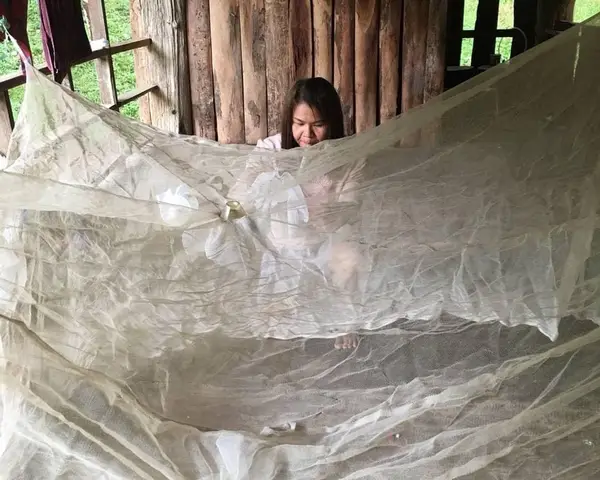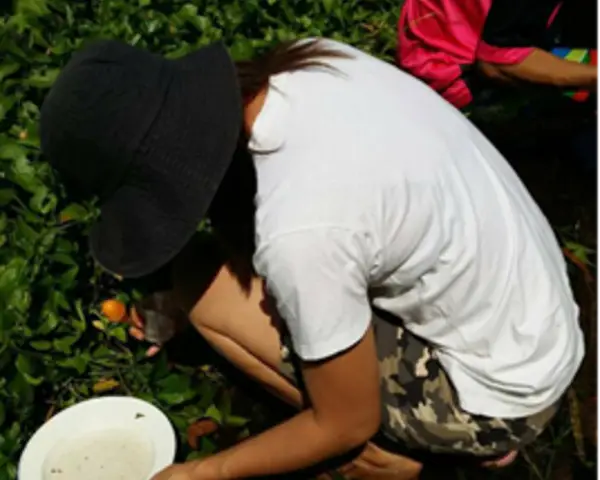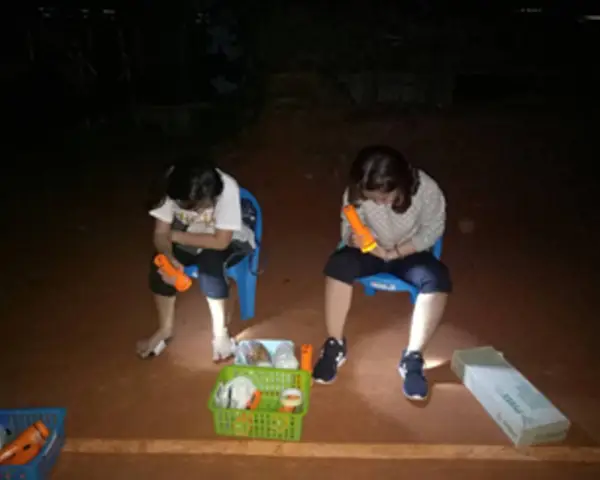
Jiraporn (Som) Sevana, a Public Health Technical Officer for Thailand’s Division of Vector-Borne Diseases (DVBD) entomology team, is one of the many faces behind Thailand’s tireless fight against mosquito-transmitted diseases.
Sevana is from the Nong Bua Lamphu province in northeast Thailand. After receiving her degree from the Faculty of Agriculture at Khon Kaen University, Sevana began her career assessing the role of insects in crop diseases as an agricultural entomologist. Later in her career, Sevana pivoted to her current role as a medical entomologist.
Medical entomologists study specific insects, referred to as vectors. A vector is a living organism, such as a mosquito or tick, that may transmit an infectious disease from an infected individual to a healthy one. Mosquitoes serve as vectors for at least eleven diseases. While Aedes mosquitoes serve as vectors for dengue, yellow fever, and Zika, female Anopheles mosquitoes are the only species capable of spreading malaria.
As Thailand approaches its goal of malaria elimination by 2024, it faces challenges including shifting environmental conditions and constantly adapting mosquitoes. On World Mosquito Day, learn how entomologists like Sevana are critical in helping us better understand the physiology and behavior of mosquitoes so we can end malaria for good.
How Do Entomologists like Sevana Contribute to Malaria Elimination Efforts?

1. Targeting the Right Interventions
Sevana’s job as an entomologist is to learn as much as possible about mosquitoes. She and her team investigates their biting behavior, physiology, and breeding patterns and uses this information to determine which insect control measures, including indoor residual spraying (IRS) and insecticide-treated nets (ITNs), are most effective at preventing malaria transmission.
"If you know the behavior of each type of mosquito, you can eliminate the mosquitoes in the right way,” says Sevana.
For example, if surveys reveal that local mosquitoes are biting outdoors, ITNs may not offer full protection and repellents may be recommended instead. Understanding mosquito biting behaviors is important for designing and evaluating protection methods. In this way, entomology data are useful for malaria program planning and response.

2. Monitoring Environmental Conditions to Help Eliminate Malaria in Thailand
Thailand relies on a system of area classification for malaria surveillance work. There are 90,718 small geographic areas in Thailand, referred to as foci. These foci are annually classified into four categories, depending on whether or not malaria transmission is occurring and whether or not the environment is suitable for Anopheles mosquitoes. Sevana and the other entomologists at DVBD collect the data necessary to determine if an environment is receptive to Anopheles mosquitoes and is therefore vulnerable to malaria transmission.
Sevana’s role in foci classification is especially important as Thailand’s landscape changes. Malaria transmission is strongly linked to environmental conditions; high precipitation and heavily forested areas are far more conducive to Anopheles breeding than dry, sparsely forested areas. As an environment changes, so does its receptivity to malaria.
“The environment is changing so much in Thailand,” says Sevana. “Agricultural fields, crop rotation areas, or short-lived crops are transitioning to become economic forest areas, rubber farms, and fruit farms. The challenge is these areas may become suitable breeding grounds for malaria-carrying Anopheles mosquitoes as the environment changes.”
To further examine these changes and their impact on malaria elimination efforts, the DVBD and Inform Asia: USAID’s Health Research Program, implemented by RTI with funding from the U.S. President’s Malaria Initiative, recently analyzed climate and environmental data from USAID and NASA’s data-for-development program, SERVIR-Mekong. Combining these results with routine national surveillance data can improve our understanding of the evolving factors that are fueling persistent transmission as Thailand strives for malaria elimination.

3. Preventing the Reintroduction of Malaria in Thailand
If a province in Thailand has not experienced malaria transmission in three years, the DVBD may certify the province as malaria-free. However, these provinces may be vulnerable to the reintroduction of malaria if they neighbor a province with ongoing transmission, or if people move frequently between provinces with and without malaria. Mosquito surveys are essential for surveillance because they can indicate an area's receptivity to the spread of malaria.
“We are currently living in a world without frontiers,” says Sevana. “Everyone can travel across borders, creating an opportunity for new vector-borne diseases [and the spread of existing ones]. We need to be active and keep learning always."
The DVBD has accelerated its prevention of re-establishment (POR) planning to ensure nimble mechanisms are in place to respond to unusual events. The draft POR risk assessment includes available entomological surveillance data. With support from the U.S. President's Malaria Initiative through Inform Asia, this is being expanded into an automated process paired with guidance on what actions need to be maintained and what actions would be taken in the event of an unexpected case or outbreak.
On World Mosquito Day and every day, we must appreciate the efforts of entomologists, public health officials, epidemiologists, and so many others to create a malaria-, dengue-, yellow fever-, Zika-free world. It is easy to become overwhelmed by these tiny villains spreading severe, even fatal, illness. But, with entomologists like Sevana hard at work, we are one step closer to a safer, healthier world.
Learn more about RTI’s work in malaria prevention, control and elimination.
